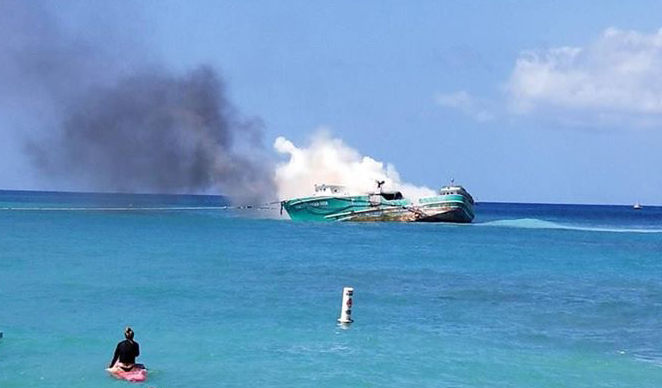
- Deadlines: The deadline for filing a claim arising out of water related accident in court can be difficult to determine. Similar situations may have very different deadlines for filing. Some claims are state law claims and generally follow Hawaii’s two (2) year statute of limitations. Other claims for maritime personal injury or death fall under federal maritime law which generally has a three (3) year statute of limitations. 46 USC Appendix section 763a Even under federal law, however, the deadline may be different. Claims against the United States, for example, have a two (2) year statute of limitations 46 U.S.C. section 741, 781 In short it is best to promptly investigate and assert any claim which you think you may have and to obtain legal assistance in determining any filing deadlines which may apply.
- Investigation of a water related accident claim can be difficult and costly. Nonetheless, a timely investigation of all available evidence related to the case may be critical to a favorable outcome. Photos and videos of relevant conditions (the inside and the outside of the vessel, the danger giving rise to the accident, the activities being carried on in the area of the accident, etc.), the area(s) where the injuries and damages were sustained and the injuries and damages themselves may prove invaluable in proving up an accident claim to a claims adjuster, a judge or a jury. Photographic documentation of the accident should be done as soon as possible.
- Generally, cases involving water related accidents include a very complicated hodge podge of traditional maritime and other water related (and often inconsistent) doctrines and claims. (It is probably so complicated because it has been around so long that Congress has often revisited this area of law to simplify and clarify it.) In spite of the Federal Courts’ so called “exclusive jurisdiction” over admiralty claims, most water related accidents have one or more causes of action which can be brought under state law. Often state law is the most promising avenue for recovery. Sometimes there is more than one state where the action can be brought (and occasionally more than one country). Selecting the correct forum in which to pursue this type of claim is very important.
- Longshore and harbor workers are generally covered for work related injuries by the Longshore and Harbor Workers’ Compensation Act. This act provides benefits similar to the federal worker’s compensation program, which benefits are also administered by the federal Office of Worker’s Compensation Programs (OWCP). Although claims against the employer are barred (in most circumstances) because of the availability of LSHWCA coverage, there may still be claims for recovery against a third party who is independently responsible for the injuries and loss.
- Seamen (the crew of ocean going vessels) generally are covered by the Jones Act. This provides medical and sustinence payments called “maintenance and cure” to partially cover medical expenses and wage loss after an injury. The Jones Act also provides a cause of action for personal injuries caused by negligence or the unseaworthiness of a vessel. Contributory negligence (even on a large scale) is not a bar to such a claim, but only reduces the amount of any damage award on a pro rata basis.

Various Water Related Accidents involving Hawaii
Some of the recent water related cases here in the state of Hawaii include the following:
-
The death of a Japanese tourist in a commercial jet ski accident, Thursday, November 12, 1998.
-
The death of an 80 year old man from Maine in a swimming accident in Waikiki on Sunday, March 15, 1998.
-
The death of a 39 year old woman who drowned while snorkling off Kahe Point on Sunday, April 26, 1998
-
The death of a 67 year old swimmer who was struck by a motor boat being used for water skiing off Waikiki on July 4, 1994.
-
The death of a 39 year old professional cliff diver while cliff diving at Waimea Falls Park on October 10, 1997.
-
The 3 year coma and death of a local developer from an accident while boat racing inKey West, Florida on Nov. 13, 1994.
-
Serious ear injuries from a Snuba dive off of a specially equipped boat moored on Oahu on May 8, 1994. (Snuba differs from scuba in that the divers do not have tanks on their backs, but instead they share a common air supply floating on the surface through air hoses.) McClenahan v. Paradise Cruises, Ltd., 888 F.Supp. 120, 1995 A.M.C. 1899 (D. Hawaii, May 19, 1995)
-
The death of a body surfer when hit by a cruise ship while bodysurfing at Point Panic, near Kewalo Basin in Honolulu on June 19, 1984. Stone v. Paradise Holdings, Inc. 619 F.Supp. 21, 1985 A.M.C. 1749 (D. Hawaii Dec 26, 1984), 795 F.2d 756, 55 USLW 2100, 1987 A.M.C. 104 (9th Cir. (Hawaii) Jul 25, 1986), cert denied, 479 U.S. 1008, 107 S.Ct. 649, 93 L.Ed.2d 704 (Dec 08, 1986).
-
The death of a professional hard hat diver in in 35 feet of water in Hilo Harbor on August 10, 1972. Holland v. Healy Tibbitts Const. Co., 379 F.Supp. 192 (D. Hawaii, Jul 24, 1974)



